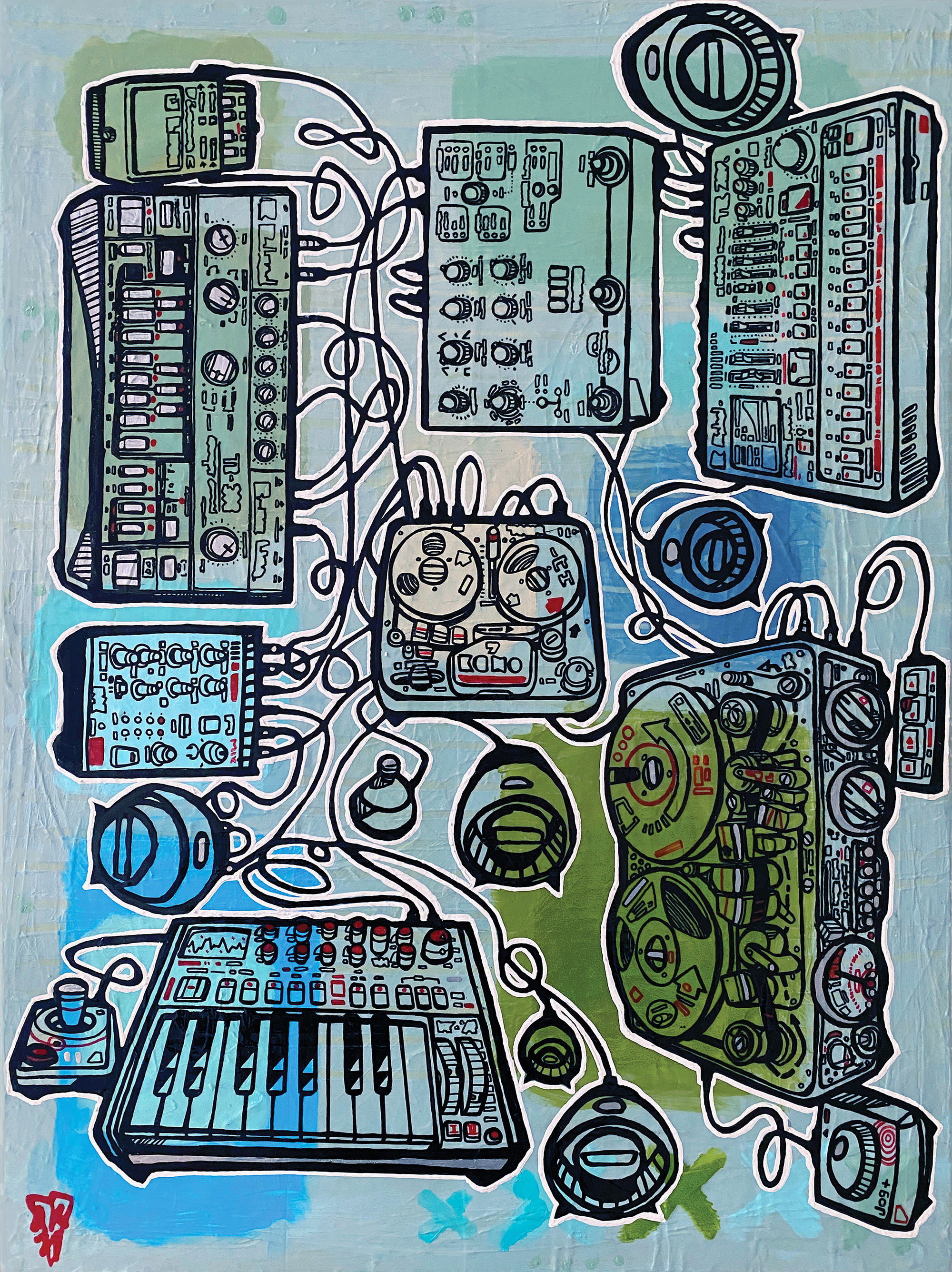The A23-M is a 3-way studio monitor from Switzerland’s PSI Audio. My account of the company’s two-way A17-M monitors [Tape Op #142] provided details about the product line, so I won’t repeat it all here. In short, PSI Audio’s speakers are hand-made, individually calibrated, and response tested. The designs are purely analog – no DSP in the signal path – and the speakers extend lower than expected compared to similar-sized monitors. In addition, PSI Audio speakers exhibit a tight, focused tweeter response rather than a broad, diffused output. In short, I consider them to be some of the most honest speakers available.
Unlike some competitors, PSI Audio’s monitors maintain consistent voicing regardless of model. When assessing the best speaker for a given space, the company advises room size and cubic volume to be the decision-maker. However, some developments in the new A23-M complicate that supposition. The A23-M joins the larger A25-M as PSI Audio’s three-way speaker design options. It’s powered by three PSI Audio analog amps, including Class G/H for bass and midrange drivers and Class A/B for the tweeter. Frequency response (tested individually in the company’s anechoic chamber) extends from 34 Hz to 23 kHz (+/-1.2 dB). The monitors arrive in a vertical array, with the tweeter over the mid, which is above the low. To maintain spec, the tweeter must align above the midrange speakers. However, the mid and tweeter are mounted on their own cabinet plate. Should a horizontal installation be required, that plate can be rotated 90 degrees.
Speaking of the mid and tweeter elements, the A23-M's feature some promising updates. PSI Audio had been exploring in-house designs and fabrication options for quite some time. So when global supply chain issues interfered with sourcing appropriate drivers (and just about everything, everywhere, for everybody), the company was already prepared to build its own. As a result, the new tweeter (recently implemented in the updated A17-M [Tape Op #142]) provides improved performance and consistency compared to third-party offerings. More significantly, the updated tweeter pairs exquisitely with PSI Audio's ingenious midrange drivers.
For those who geek out on details, every transducer topology has strengths and weaknesses. Designers labor to retain the advantages of a driver type while minimizing shortcomings. Most midrange drivers are essentially smaller versions of woofers, which present complications related to cone resonance and Doppler distortion, to name a few. PSI Audio has developed its own dome-style midrange driver, which unsurprisingly has characteristics similar to larger dome tweeters. Admittedly, domes introduce higher fundamental resonances and upper bandwidth stability complications. But their inherent advantages, including lower mass and edge-driven movement, proved too attractive of a goal. A successful implementation would result in some of the best speakers obtainable. My ears agree. The A23-M’s mids are a blend of superb clarity, transient accuracy, and smooth response.
Of course, this all reads well on a spec sheet, but how do they perform? First, the good: A subwoofer is not necessarily required with the A23-M, making room set up less complicated. Although I tested the review units vertically, analog console owners will appreciate the horizontal option. The tweeters have a slightly better transient response (compared to the originals), but I found the midrange drivers to be remarkable. The mids are a blend of robust and accurate. Pushing the speakers to foolish levels made no difference to the distortion or lack thereof across the midrange. This experience is testimony to the quality of these speakers. I tried a pair of competing monitors popular for both tracking and mixing (these are well-known with a street price of about $3,200). At lower volumes, the speakers seemed similar, but as I raised the level, the difference grew more apparent. When the other speakers distorted, the A23-Ms were not stressed. I continued until I had enough (over 105 dB C-weighted), yet there was no breakup, crackle, or midrange crumple whatsoever.
On clarity, reviewers have various methods, with translation being a key consideration. For the A23-M, I chose a different tact: separation. Specifically, my goal was to identify background vocals with distinction. On Suzanne Vega’s “Luka,” Shawn Colvin’s supporting lines shift from a nice addition to a delight stamped with her fingerprint. The chorus of Carly Simon’s “You’re So Vain” makes Mick Jagger’s presence so obvious you’ll question how you could NOT have heard him in the past. How about Luther Vandross on David Bowie’s “Young Americans”? Michael Jackson can’t hide on Jay-Z’s “Girls, Girls, Girls.” There are countless others out there.
My only reservation deals with accuracy related to the present music situation. Traditionally, mastering engineers spend most resources on room acoustics and monitors. The idea of multiple speaker sets was abhorrent. Fast forward to 2020, or 2022, or whatever year it is – who knows anymore – this philosophy has changed. With music being consumed on portable speakers, earbuds, word pads, and laptops, (all) engineers need to honestly assess the best way to make sure our projects translate to these compromised playback situations. Unfortunately, the PSI A23-M’s accuracy does not represent today’s compromised playback conditions. Put directly; you’ll need a set of terrible speakers to partner with this monitor. The A23-M does not distort easily, does not turn to hissing snakes at moderate volumes, nor experience bass resulting from harmonic content over actual fundamentals. Oh well, here we are.
The level of research, testing, materials, craftsmanship, and effort put into each PSI Audio speaker is among the highest in the industry. These are tools for people who make great-sounding records. If you can have only one good thing in your room, it must be speakers. Outboard gear, plug-ins, anything else – these are of secondary priority to our monitoring setup. There is nothing other than first-place with the A23-Ms. I highly recommend them.




_disp_horizontal_bw.jpg)